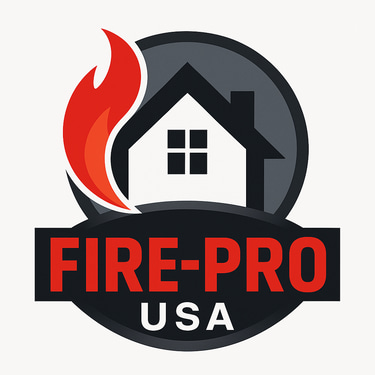Zone 0
Why Zone 0 is so important


Why Zone 0 Is So Important
By Don Green
If you’ve read my past blogs, you know I talk a lot about embers—those wind-driven troublemakers that can travel miles ahead of a wildfire and ignite homes long before flames ever arrive. We’ve seen time and again that it’s not always the big wall of fire that takes homes down. It’s the little things—dry leaves, a wooden deck, an open vent—that make the biggest difference.
That’s where Zone 0 comes in.
What Is Zone 0?
Zone 0 is the most critical part of what’s known as “defensible space.” It’s the area from 0 to 5 feet around your home—what I call the "No Burn Zone." Everything in this space, from the ground to the roofline, should be built or maintained to resist ignition. That means no flammable plants, no wood mulch, no firewood stacked against the wall. And it means protecting openings where embers can get in.
Think of Zone 0 as your home’s armor. If this zone fails, the rest of your fire mitigation work might not matter.
Why It Matters
A hardened home starts with a hardened perimeter. Embers are relentless. They sneak into attic vents, get caught in roof valleys, land in rain gutters, and smolder under decks. During wildfires, firefighters often report homes burned to the ground while neighboring properties—just a few feet away—are untouched. The difference? A clear Zone 0 and ember-resistant features.
It’s not about making your house fireproof. It’s about removing the easy wins for fire.
What We’re Doing About It
As part of our Fire-Pro USA program, we’re working with homeowners to clean up the 0–5 foot zone around their homes and install ember-proof vent screens—one of the smartest upgrades you can make.
We can help you assess your home’s vulnerabilities and get started with improvements that actually make a difference. We’ve seen firsthand that Zone 0 is often the deciding factor between a close call and a total loss.
Start with These Three Steps
Clear combustibles: Remove dead plants, wood piles, plastic furniture, and anything else that could ignite within five feet of your walls.
Seal your vents: Upgrade to ember-resistant screens (1/8" or smaller) to block embers from getting into your attic or crawl space.
Think like an ember: Walk around your home and look for places a burning ember could land or get stuck—gutters, roof corners, deck crevices—and clean or improve them.
None of this is expensive. In fact, some of the best things you can do cost nothing but a few hours of your time.
Contacts
(602) 350-8227
info@fire-prousa.com
Contact Page
Emergency Service Hours
24X7, 365 days per year
